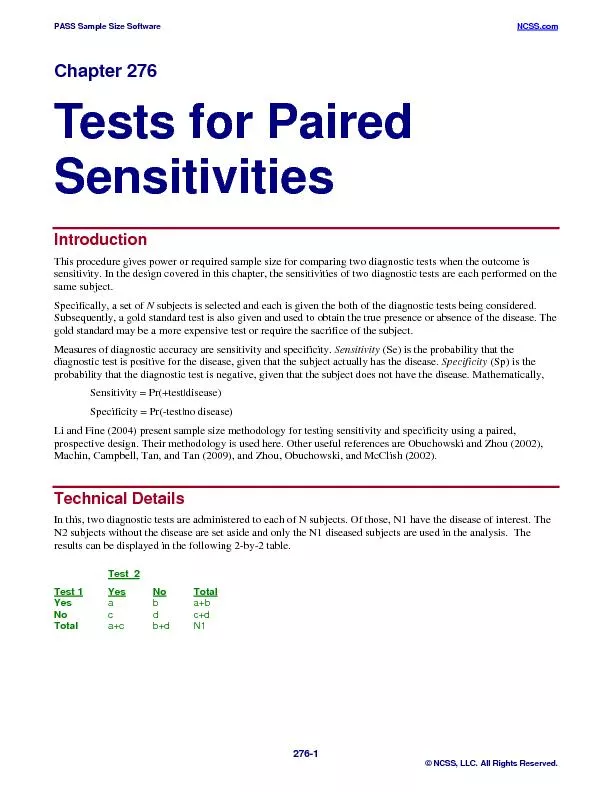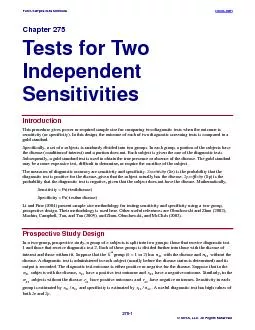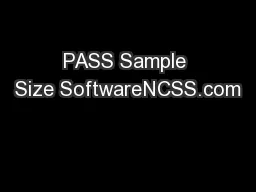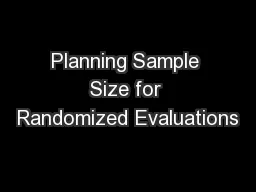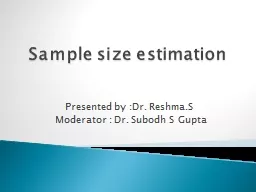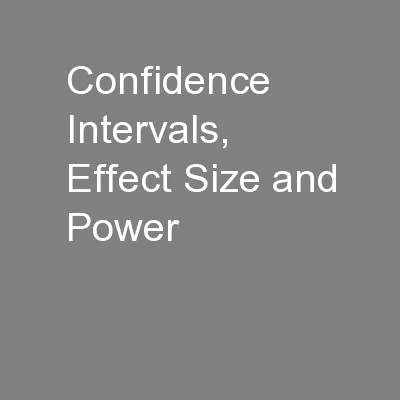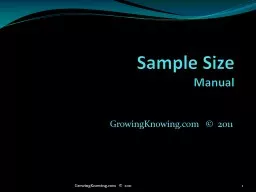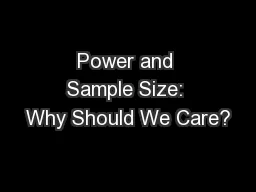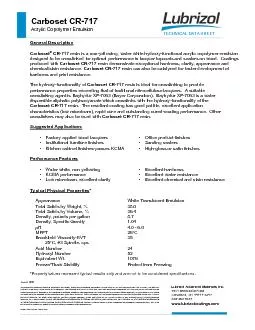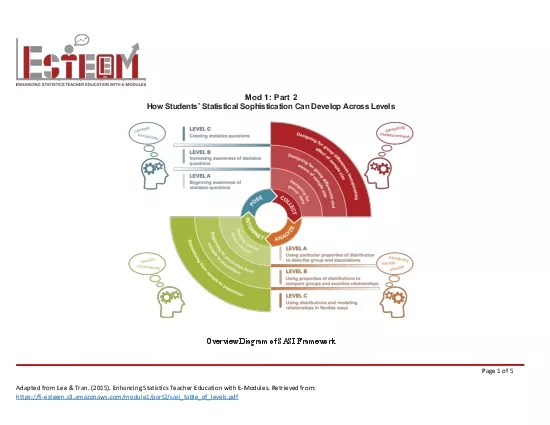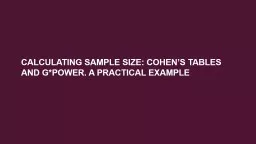PDF-PASS Sample Size SoftwareNCSS.com
Author : tatyana-admore | Published Date : 2016-07-30
NCSS LLC All Rights ReservedChapter 276Tests for Paired SensitivitiesIntroduction is procedure givespower or required sample size for comparing twodiagnostic testwhen
Presentation Embed Code
Download Presentation
Download Presentation The PPT/PDF document "PASS Sample Size SoftwareNCSS.com" is the property of its rightful owner. Permission is granted to download and print the materials on this website for personal, non-commercial use only, and to display it on your personal computer provided you do not modify the materials and that you retain all copyright notices contained in the materials. By downloading content from our website, you accept the terms of this agreement.
PASS Sample Size SoftwareNCSS.com: Transcript
Download Rules Of Document
"PASS Sample Size SoftwareNCSS.com"The content belongs to its owner. You may download and print it for personal use, without modification, and keep all copyright notices. By downloading, you agree to these terms.
Related Documents

